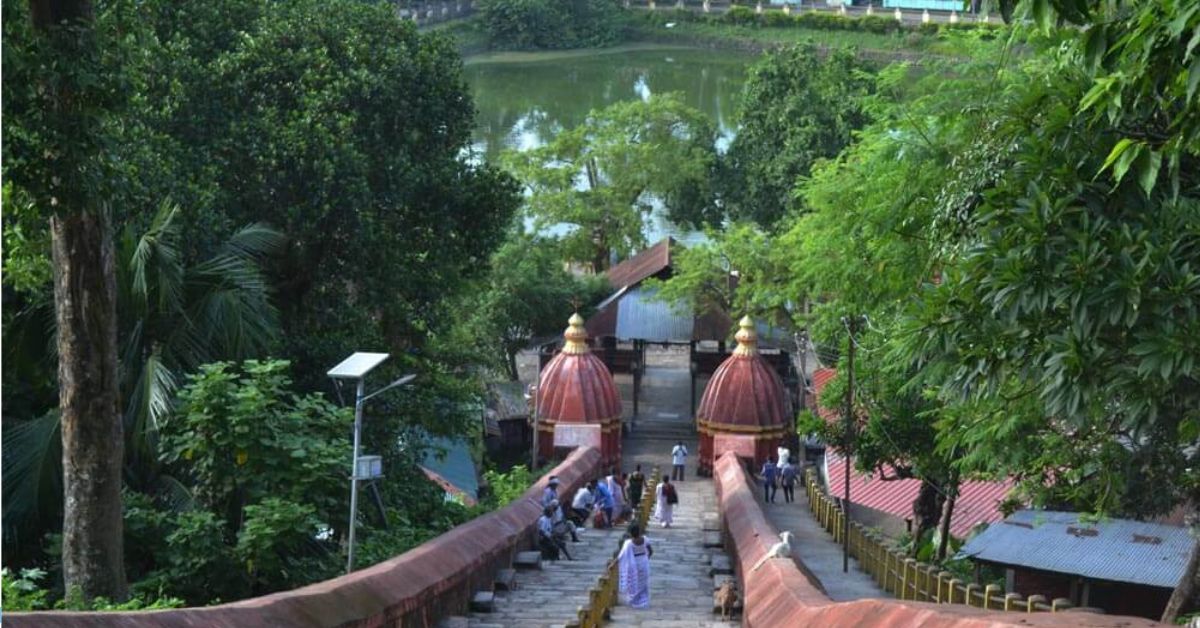Hajo, Assam nestled on the banks of the Brahmaputra, is a captivating blend of religions and history. This ancient town serves as a spiritual haven where Hinduism, Buddhism, and Islam coexist harmoniously. With its sacred temples, ancient mosques, and serene monasteries, Hajo draws pilgrims and travelers seeking a deeper connection to India’s rich cultural tapestry. As you explore its vibrant streets, you’ll experience a profound sense of peace and unity that makes Hajo a must-visit destination.
How to reach:
By Air: This place is accessible by air, rail, and road. The nearest airport is Lokpriya Gopinath Bordoloi International Airport in Guwahati, about 35 kilometers away. From there, you can take a taxi or use public transportation to reach Hajo.
By Train: Guwahati also serves as the nearest railway hub, well-connected to major Indian cities. Trains from various parts of the country arrive at Guwahati Railway Station. From there, you can hire a taxi or take a local train to Hajo.
By Road: Hajo is well-connected by road as well. National Highways NH27 and NH31 connect Guwahati to Hajo, which is approximately 25 kilometers away. Regular bus services operate between the two cities, providing a budget-friendly travel option. Once in Hajo, taxis and auto-rickshaws are available for local transportation.
Best time to visit:
Winter (October to February): Enjoy pleasant weather ideal for sightseeing and outdoor activities. Immerse yourself in the festive spirit with festivals like Magh Bihu and Saraswati Puja.
Spring (March to April): Mild temperatures and blooming landscapes create a perfect setting for exploring Hajo’s attractions. Witness religious fervor during Dol Yatra and Holi celebrations.
Summer (May to June): Hot weather is best suited for early morning or late afternoon visits. Fewer festivals during this time offer a quieter experience.
Monsoon (July to September): Heavy rainfall can disrupt travel plans. While outdoor activities might be limited, the lush greenery offers a different charm for photography enthusiasts.
Attractions:
Hayagriva Madhava Temple:
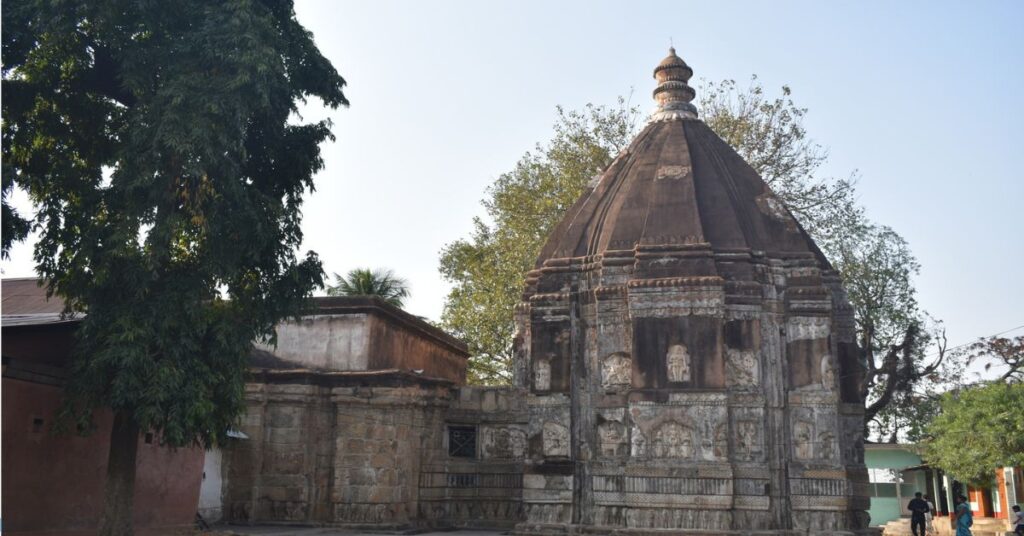
The Hayagriva Madhava Temple is a sacred Hindu pilgrimage site dedicated to Lord Vishnu in his Hayagriva form. This ancient temple, renowned for its architectural grandeur, draws devotees seeking blessings and spiritual solace. Inside, a stone idol of Lord Vishnu, symbolizing knowledge and wisdom, resides. Nestled amidst lush greenery and the serene Brahmaputra River, the temple offers a tranquil space for worship and meditation.
Powa Mecca Mosque:
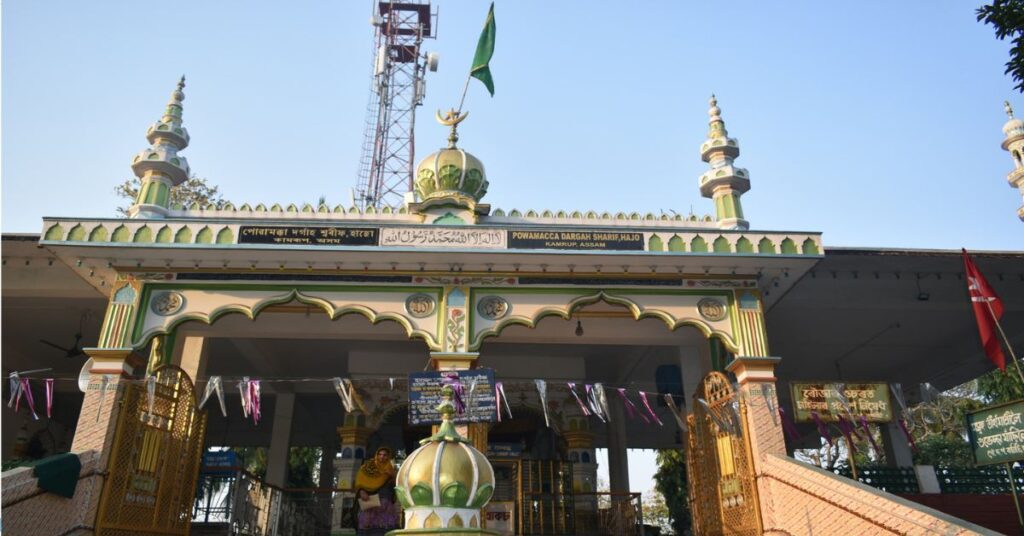
The Powa Mecca Mosque in Hajo stands as a significant Islamic site. Believed to be built by the revered Sufi saint Pir Ghiyasuddin Auliya, it showcases a beautiful blend of architectural styles. The mosque holds deep religious importance for Muslims and attracts visitors seeking to explore Assam’s rich cultural heritage. Its serene atmosphere and historical significance make it a must-visit for anyone exploring this place.
Madan Kamdev Temple:
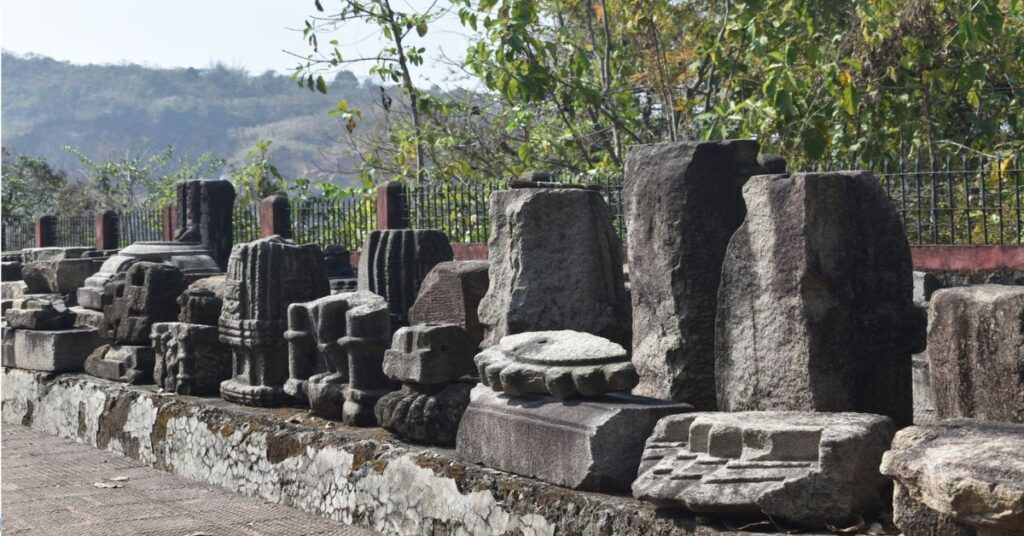
Madan Kamdev is an ancient archaeological site, showcasing ruins dating back to the 10th-12th centuries. Primarily dedicated to Lord Shiva, the complex features intricate sculptures of various deities. This site offers a glimpse into Assam’s rich history and architectural heritage, captivating history enthusiasts and spiritual seekers alike.
Kedar Temple:
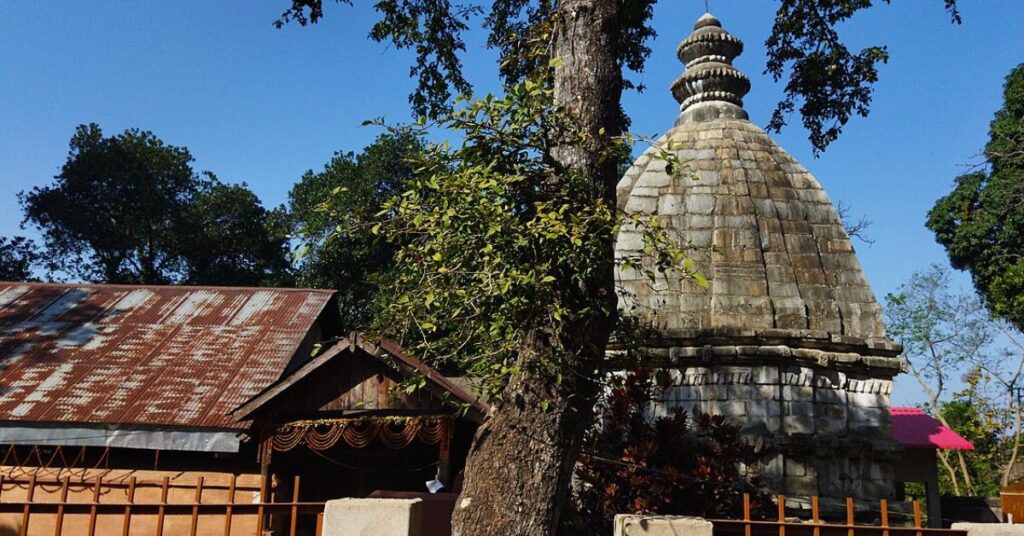
The Kedar Temple is a significant pilgrimage site dedicated to Lord Shiva. Its serene atmosphere and spiritual aura draw devotees seeking blessings and inner peace. The temple’s architecture reflects the region’s rich cultural heritage. A visit to the Kedar Temple offers a tranquil escape and a deep spiritual experience.
Local Experiences:
Discover sacred sites: Immerse yourself in the spiritual ambiance of the Hayagriva Madhava Temple, Powa Mecca Mosque, and Hajo Powa Mecca.
Experience local culture: Enjoy traditional Assamese dance and music performances at Dhoparguri Satra.
Unveil history: Explore the ancient ruins of Madan Kamdev Temple and Hajo Hill.
Savor breathtaking views: Climb Manikut Hill for panoramic landscapes.
Celebrate local festivals: Join in the festivities of Magh Bihu or Saraswati Puja.
Indulge in local cuisine: Taste the flavors of Assam with traditional dishes.
Shop for unique souvenirs: Discover local handicrafts and Assam tea.
Connect with locals: Learn about their traditions and stories.
Travel tips:
- Plan for the weather: Check the forecast and pack accordingly. Layers are recommended due to varying temperatures.
- Respectful attire: Dress modestly when visiting religious sites.
- Photography etiquette: Seek permission before photographing locals or religious ceremonies.
- Easy transportation: Arrange for local taxis or auto-rickshaws for convenient travel within Hajo.
- Language tips: Basic Assamese phrases can be helpful, but English is widely understood.
- Health and safety: Carry essentials like insect repellent, sunscreen, and bottled water.
- Financial planning: Carry sufficient cash as ATMs may be limited.
- Food safety: Enjoy local cuisine but prioritize hygiene when dining out.
- Personal safety: Be mindful of your belongings and follow local guidelines.
Conclusion
Hajo, Assam, stands as a captivating blend of history, spirituality, and natural beauty. This enchanting town offers a profound journey into the heart of Assam’s cultural heritage. From the sacred grounds of the Hayagriva Madhava Temple and Powa Mecca Mosque to the ancient echoes of Madan Kamdev Temple and Hajo Hill, Hajo beckons with its timeless allure. As you explore its serene landscapes and immerse yourself in the local culture, you’ll discover a place where spirituality, history, and nature harmoniously coexist. Follow Xplro.com in it.
FAQs
What is the ideal time to visit Hajo, Assam?
- The ideal time to visit is from October to April when the weather is pleasant, and festivals like Magh Bihu and Saraswati Puja add cultural vibrancy.
How can I reach Hajo, Assam?
- This Place is accessible by road from Guwahati (about 25 km away), and taxis or buses are available. The nearest airport and railway station are in Guwahati.
What are the main attractions in Hajo?
- Key attractions include Hayagriva Madhava Temple, Powa Mecca Mosque, Madan Kamdev Temple, and serene spots like Manikut Hill.
Are there any religious customs to be aware of when visiting temples and mosques in Hajo?
- Visitors should dress modestly and remove footwear before entering religious sites like temples and mosques. Photography may be restricted in some areas.
Can I visit Hajo with my family?
- Yes, This Place is family-friendly with attractions suitable for all ages, including cultural sites and scenic spots.
What activities can I do in Hajo besides visiting temples and mosques?
- You can attend cultural performances at Dhoparguri Satra, enjoy panoramic views from Manikut Hill, and explore archaeological sites like Hajo Hill.
Is it safe to travel to Hajo, Assam?
- This place is generally safe for travelers. However, it’s advisable to take usual precautions regarding personal belongings and follow local customs respectfully.
What kind of accommodations are available in Hajo?
- This place offers limited accommodations such as guesthouses and homestays. For more options, travelers often stay in nearby Guwahati.
Can I purchase souvenirs in Hajo?
- Yes, you can find handicrafts, traditional textiles, and Assam tea in local markets and shops.
Are there any health precautions I should take when visiting Hajo?
- It’s advisable to carry insect repellent, drink bottled water, and eat at reputable eateries to avoid any health issues.
What are the local cuisines I should try in Hajo?
- Sample traditional Assamese dishes like rice, fish curry, and Assam tea, available at local eateries and restaurants.
How long should I plan to stay in Hajo to explore its attractions fully?
- A 2-3 day stay is usually sufficient to visit the main attractions and immerse yourself in the cultural and spiritual essence of this place.




